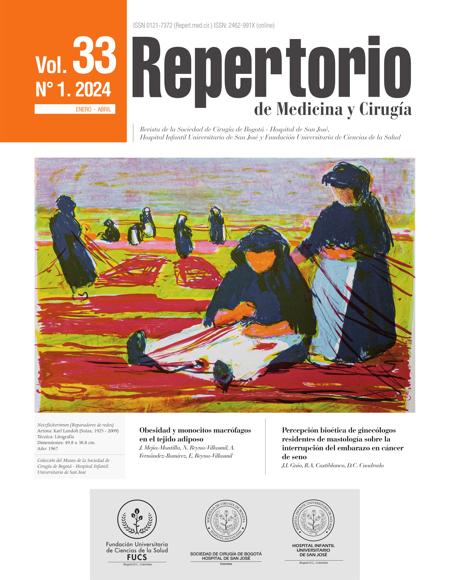Prevalence of energy drinks consumption and adverse effects among medical students
Prevalencia del consumo de bebidas energizantes y efectos adversos en estudiantes de medicina
![]()
![]()

Show authors biography
Introduction: energy drinks (ED) are stimulant and carbohydrate preparations. Objective: to determine the prevalence, characteristics of ED usage and adverse effects among students of a medical program Methodology: an observational, descriptive, cross-sectional, retrospective study, which included medical students of a higher education institution. Those who were not completing the full academic load for their semester, those who responded the survey inadequately or did not agree to participate in the study, were excluded. Results and discussion: 241 students participated, of which 72,20% were females. Only 55 reported symptoms such as insomnia (13.69%) and headache or migraine (8.30%) and 49.38% reported on ED consumption. To combine energy drinks with alcohol is probable, given the high alcohol consumption rate (51.26%), while it was not associated with smoking. Adverse events reported were insomnia (21.58%), tachycardia (17.43%), headache (14.52%), facial flushing (13.28%) and tremor; and to a lesser extent, anxiety, and gastrointestinal disorders (17.42%). Conclusions: energy drinks consumption is high at adolescence, especially among university students. These preparations can produce long-term adverse effects mainly cardiovascular complications. Thus, monitoring ED marketing is important.
Article visits 5298 | PDF visits 3826
Downloads
- Manrique CI, Arroyave-hoyos CL, Galvis-pareja D. Bebidas cafeínadas energizantes:efectos neurológicos y cardiovasculares. IATREIA. 2018;31(1):65–75. https://doi.org/10.17533/udea.iatreia.v31n1a06. DOI: https://doi.org/10.17533/udea.iatreia.v31n1a06
- Gutiérrez-Hellín J, Varillas-Delgado D. Energy drinks and sports performance, cardiovascular risk, and genetic associations; future prospects. Nutrients. 2021;13(3):715. https://doi.org/10.3390/nu13030715. DOI: https://doi.org/10.3390/nu13030715
- Piccioni A, Covino M, Zanza C, Longhitano Y, Tullo G, Bonadia N, et al. Energy drinks: a narrative review of their physiological and pathological effects. Intern Med J. 2021;51(5):636–646. https://doi.org/10.1111/imj.14881. DOI: https://doi.org/10.1111/imj.14881
- La Vieille S, Gillespie Z, Bonvalot Y, Benkhedda K, Grinberg N, Rotstein J, Barber J, Krahn AD. Caffeinated energy drinks in the canadian context: Health risk assessment with a focus on cardiovascular effects. Appl Physiol Nutr Metab. 2021;46(9):1019–1028. https://doi.org/10.1139/apnm-2021-0245. DOI: https://doi.org/10.1139/apnm-2021-0245
- Grgic J, Pedisic Z, Saunders B, Artioli GG, Schoenfeld BJ, McKenna MJ, et al. International Society of Sports Nutrition position stand: sodium bicarbonate and exercise performance. J Int Soc Sports Nutr. 2021;18(1):61. https://doi.org/10.1186/s12970-021-00458-w. DOI: https://doi.org/10.1186/s12970-021-00458-w
- Jebrini T, Manz K, Koller G, Krause D, Soyka M, Franke AG. Psychiatric Comorbidity and Stress in Medical Students Using Neuroenhancers. Front Psychiatry. 2021;12:771126. https://doi.org/10.3389/fpsyt.2021.771126. DOI: https://doi.org/10.3389/fpsyt.2021.771126
- Torres Madrid C, Angulo Romero H, García Petro K, Romero Ortiz M, Polo Martinez M. Prevalencia y patrones de consumo de bebidas energizantes en estudiantes en una universidad colombiana. Rev Salud Bosque. 2019;9(1):7–15. https://doi.org/10.18270/rsb.v9i1.2637. DOI: https://doi.org/10.18270/rsb.v9i1.2637
- Moussa M, Hansz K, Rasmussen M, Gillman C, Pollard C, Kwak E, et al. Cardiovascular Effects of Energy Drinks in the Pediatric Population. Pediatr Emerg Care. 2021;37(11):578–582. https://doi.org/10.1097/PEC.0000000000002165. DOI: https://doi.org/10.1097/PEC.0000000000002165
- Somers KR, Svatikova A. Cardiovascular and autonomic responses to energy drinks—clinical implications. J Clin Med. 2020;9(2):431. https://doi.org/10.3390/jcm9020431. DOI: https://doi.org/10.3390/jcm9020431
- Cruz Muñoz V, Urquizu Rovira M, Valls Ibañez V, Manresa Domínguez JM, Ruiz Blanco G, Urquizu Rovira M, Toran P. Consumption of soft, sports, and energy drinks in adolescents. The BEENIS study. An Pediatr. 2020;93(4):242–250. https://doi.org/10.1016/j.anpedi.2020.01.004. DOI: https://doi.org/10.1016/j.anpede.2020.01.010
- Euromonitor International. Sports and energy drinks in Colombia [Internet]. Euromonitor Int.; 2019 [citado dicienbre 2020]. Available from: https://www.euromonitor.com/sports-and-energy-drinks-in-colombia/report
- Ministerio de Comercio, Industria y Comercio. Registro y certificación de productos ante el INVIMA [Internet]. Ministerio de Comercio, Industria y Comercio; s.f. [citado 2022]. Disponible en: https://www.vue.gov.co/servicios-a-la-ciudadania/tramites-y-consultas/registro-certificacion-productos-invima
- Hamowy R. Government and public health in America. Edward Elgar Publishing; 2007. DOI: https://doi.org/10.4337/9781847204257
- Voskoboinik A, Kalman JM, Kistler PM. Caffeine and Arrhythmias: Time to Grind the Data. JACC Clin Electrophysiol. 2018;4(4):425–432. https://doi.org/10.1016/j.jacep.2018.01.012. DOI: https://doi.org/10.1016/j.jacep.2018.01.012
- Throttle F, Cola J. Energy Drinks. In: Bethesda. LiverTox: Clinical and Research Information on Drug-Induced Liver Injury. National Institute of Diabetes and Digestive and Kidney Diseases; 2020. p.1–19. Available from: https://www.ncbi.nlm.nih.gov/books/NBK559836/
- Nadeem IM, Shanmugaraj A, Sakha S, Horner NS, Ayeni OR, Khan M. Energy Drinks and Their Adverse Health Effects: A Systematic Review and Meta-analysis. Sports Health. 2021;13(3):265–277. https://doi.org/10.1177/1941738120949181. DOI: https://doi.org/10.1177/1941738120949181












